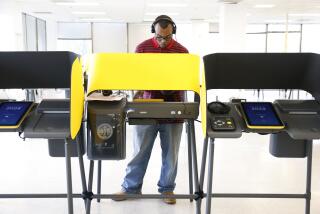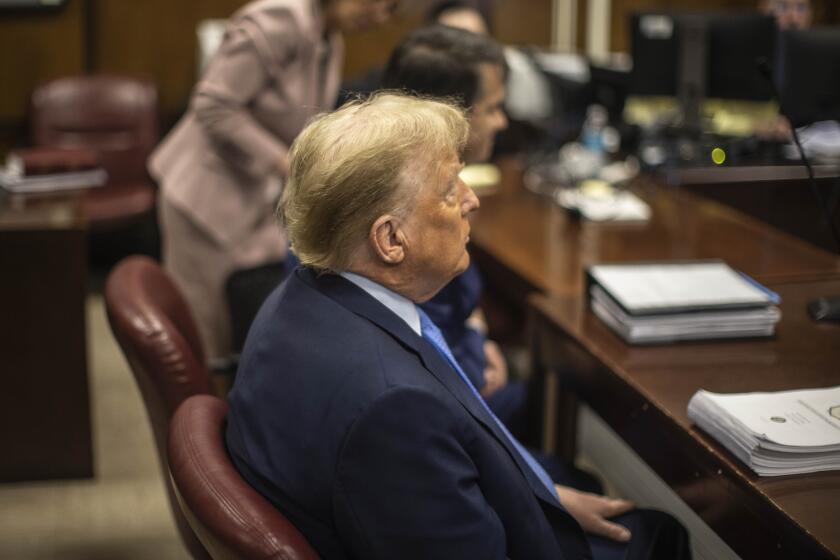How Hillary Clinton won California

Hillary Clinton won a commanding victory over Bernie Sanders in the California primary because she meticulously targeted voters, ventured outside of traditional Democratic strongholds, and sharpened her focus on the stakes of a Donald Trump presidency.
Ultimately, the Clinton campaign’s methodical effort beat the undeniable enthusiasm among Sanders’ supporters, who turned out by the thousands every time he held a rally in the state.
“You can have a lot of excitement and a compelling message and inspire people, but if they don’t show up to vote, it doesn’t matter,” said Rose Kapolczynski, a longtime advisor to Sen. Barbara Boxer. Kapolczynski supports Clinton but is not affiliated with her campaign. “Sanders did have very impressive rallies all over the state, but were those people turning around and calling their neighbors and taking action to get other people to vote for Sanders?”
TRAIL GUIDE: All the latest news on the 2016 presidential campaign >>
Clinton is leading Sanders by 13 percentage points, but the margin is expected to narrow once the remaining ballots from Tuesday’s primary are counted.
Los Angeles City Councilman Gil Cedillo, a Sanders supporter who stumped with him, blames the loss on a lack of campaign organization, problems at polling places, and a media that failed to cover Sanders and named Clinton the presumptive nominee on the eve of the election, or what he called “rank voter suppression.”
“Those three factors are significant in not allowing the Sanders’ movement to be realized in the electoral count,” he said.
In the days leading up to the primary, some polls showed the race tightening. On election day, Sanders’ supporters did turn out.
Large numbers of Californians cast ballots by mail, starting a month before election day. At the time, Sanders was coming off a string of East Coast losses and was working hard to win in Indiana, West Virginia and Oregon to change the narrative of the race and to boost fundraising, said Ben Tulchin, Sanders’ San Francisco-based pollster.
They were successful in those states, but it came at a cost. Clinton’s California campaign used that time to aggressively target people likely to vote by mail, who already skew toward Clinton because they tend to be older and frequent voters. Clinton banked a large lead among these voters before polls showed a tightening race in California.
“There was a massive effort starting weeks before people even received their ballots, a really sophisticated vote chase where we had gone through and figured out who were our voters and we really relentlessly pursued them,” said Ace Smith, a senior advisor to Clinton’s California effort. “We had a list and we checked it twice. Actually way more than twice.”

Hillary Clinton speech highlights
The campaign also aggressively focused on demographics that have traditionally supported Clinton — minorities and women. They advertised and were able to call voters in six languages in addition to English. Women-to-women phone banks were held every Wednesday. In the final four days of the campaign, volunteers made more than 2 million calls to voters.
Of particular interest were African Americans, who have a long relationship with Clinton and her husband, former President Bill Clinton, but who had abandoned her to support then-Sen. Barack Obama during the 2008 primary. Elected officials, faith leaders and celebrities such as Magic Johnson and Kareem Abdul-Jabbar campaigned on Clinton’s behalf in places like South Los Angeles.
“The focus on the early vote and the focus on diversity I think is really a big piece of how and why we won,” said Buffy Wicks, Clinton’s state director.
Join the conversation on Facebook >>
The final piece was Clinton and her husband barnstorming the state, holding dozens of events in the days before the primary. These events took place not only in places one would expect, such as the Westside and San Francisco, but also places such as El Centro, Antioch and Perris, “a lot of places that have not been touched by a presidential campaign,” Smith said.
The appearances appeared to work — for example, Clinton leads Sanders by 37 points in Imperial County, where El Centro is located. She also beat Sanders in the most liberal parts of the state, such as San Francisco and Alameda counties, areas that Sanders needed to win to make the race competitive.
Last Thursday, Clinton kicked off a five-day tour with a speech in San Diego, where she laid out what she believes are the consequences of a Donald Trump presidency. Many Democratic operatives called it one of the most notable moments of her candidacy. She gave the speech as Trump was saying a judge could not fairly oversee a trial against Trump’s now-defunct real estate school because the judge’s heritage was Mexican.
The intersection of those two events “just crystallized this race for an awful lot of people” across the nation, said Chris Lehane, a Clinton supporter who is not affiliated with her campaign but had worked for Bill Clinton. “California, we were the state that happened to be voting in that moment.”
Sanders supporters point to the large number of newly registered voters as proof of their campaign’s vibrancy, but it’s unclear what segment of those voters were Sanders supporters. Other new registrants on the Democratic side were motivated to vote against Trump.
Sanders’ campaign argues that it lost a couple of points because of confusion among voters who registered as having no party preference. These voters, who tend to favor Sanders, are allowed to cast ballots in a Democratic primary in the state, but must know to ask for the Democratic ballot. A lawsuit arguing this point was filed by Sanders supporters against the state, but it was rejected.
Overall, Tulchin says, he was proud that the campaign, which once trailed Clinton by 63 percentage points in California, made up significant ground.
“We weren’t able to completely close the deal. We had limited resources to work with in California and it’s a big, expensive state,” he said. “We gave it our best shot.”
For the latest on national and California politics, follow @LATSeema on Twitter.
MORE NATIONAL NEWS
Donald Trump is his own chief strategist and campaign spokesman. So what could go wrong?
Debtors prison a thing of the past? Some places in America still lock up the poor
Is this booming Northwest land a paradise or disaster waiting to happen?
More to Read
Get the L.A. Times Politics newsletter
Deeply reported insights into legislation, politics and policy from Sacramento, Washington and beyond. In your inbox three times per week.
You may occasionally receive promotional content from the Los Angeles Times.







